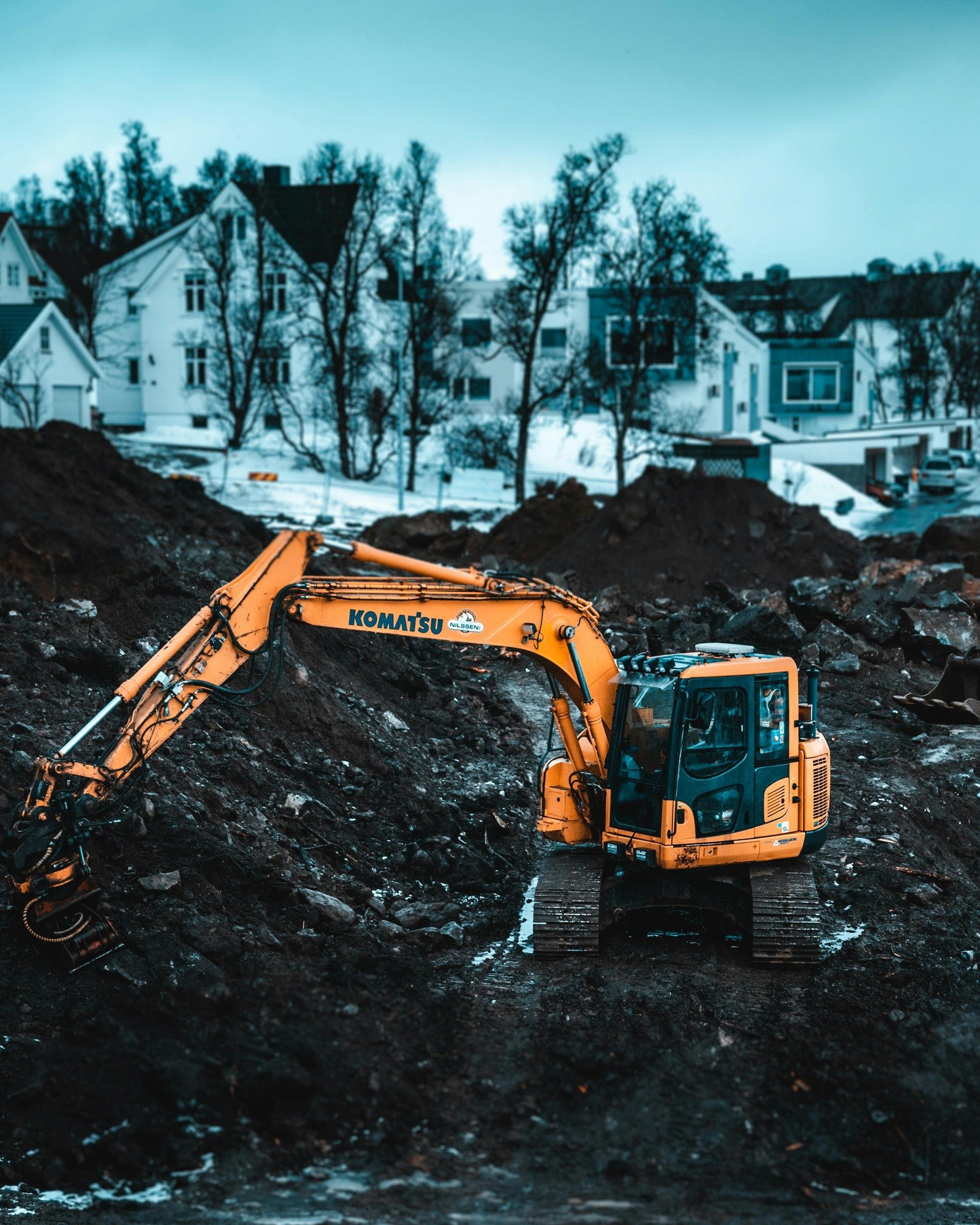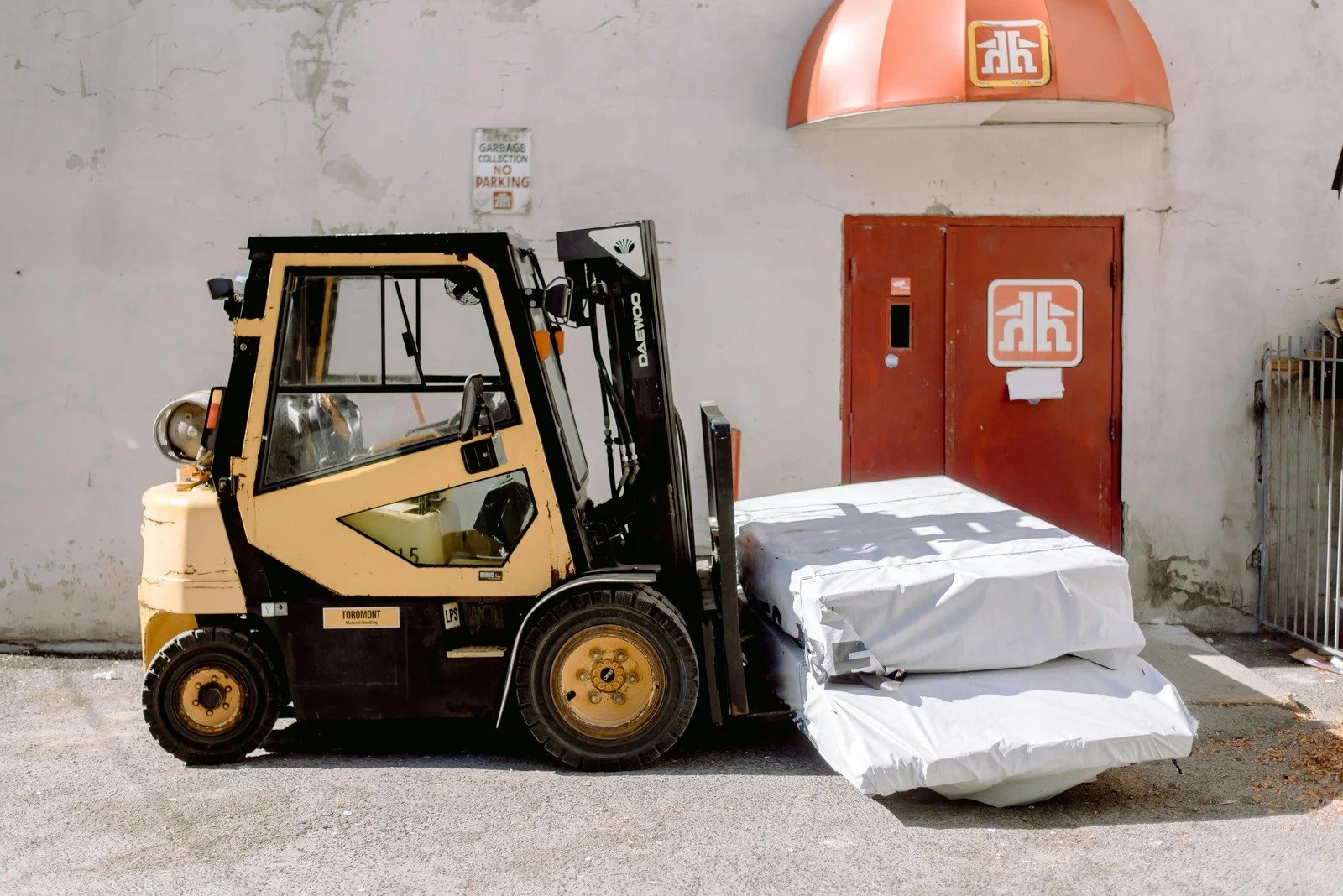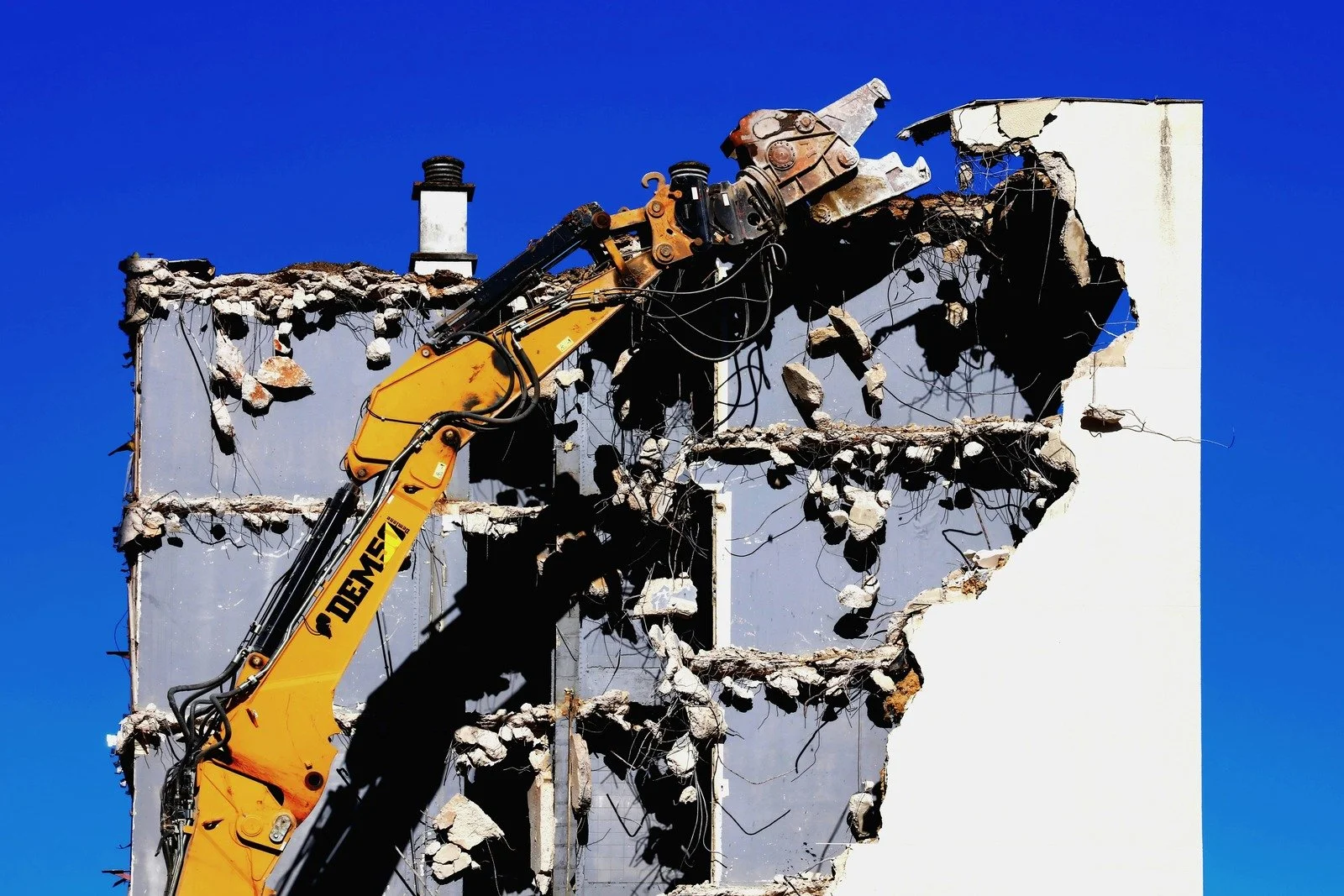The Essential Guide to Construction Site Machinery
This comprehensive guide takes you through the various types of construction site machinery and their roles, and how they contribute to the completion of construction projects as well as farming and landscaping projects that shape the world we live in.
When you witness the rise of a skyscraper or the formation of a new highway, the sheer magnitude and precision of the large scale construction sites can be awe-inspiring.
What lies beneath the dust and noise is an intricate dance of heavy machinery, working tirelessly to bring architect's visions to life.
Heavy construction equipment known as machinery has evolved to become the backbone of every major building, roadway, and infrastructure project.
Understanding the different types of construction machinery and their functions not only provides insight into the industry but also an appreciation for the seamless integration of technology and human expertise.
The Foundation: Understanding Construction Machinery
Before we roll our sleeves up on the intricacies of each machine, it's crucial to define what we mean by 'construction machinery.'
This broad term encompasses all heavy construction equipment that are employed in the various stages of construction projects to perform or transport heavy worksite materials.
These could be earthmoving, lifting, material handling, or even demolition.
The construction industry relies heavily on construction equipment to improve efficiency and safety, reduce construction times, and avoid the limitations of manual labour.
These machines come in all shapes and sizes, powered by human heavy equipment operators or autonomous systems, each with the sole purpose of making a construction site the epitome of systematic productivity.
Unearthing Earthmoving Heavy Construction Equipment
When ground must be broken, moved, or graded, earthmoving machines are the crux of the operation.
The Mighty Bulldozer
Bulldozers are instantly recognizable by their huge blades at the front, which can be angled and lowered.
These beasts are primarily used for land clearing, levelling soil, and shoving sand and soil.
A bulldozer may be used in construction and mining sites, farming, and forestry projects.
With tracks for maximum traction and a ripper at the back to break up tough soil, bulldozers are essential in clearing land and preparing construction sites.
The Versatility of Excavators
The excavator is another essential piece of heavy equipment used in construction.
It has a long arm with a bucket attached to it and runs on wheels or tracks.
It is a highly versatile machine that can be used for digging trenches, foundations, and holes for utilities.
With different attachments such as augers, grapples, and hammers, excavators can also perform tasks like demolition, forestry work, and snow removal.
Mini excavators, also known as compact excavators, are smaller versions of traditional excavators and can access tight or confined spaces.
The Heavy Duty Dump Truck
Dump trucks are the backbone of any construction site, hauling and transporting large quantities of materials such as sand, gravel, and debris.
They come in all sizes and shapes, from small off-road dump trucks to enormous articulated haulers.
The powerful dump truck is designed to carry heavy loads or heavy equipment over rough and rugged terrain with ease.
With their robust design and high-capacity beds, dump trucks can handle the toughest jobs, making them a staple on any construction project.
Lifting the Heavyweights: Construction Cranes
Cranes play a critical role in lifting and moving heavy materials to great heights.
They are used in various settings such as highway construction, skyscraper building, and even shipyards.
With their ability to lift and move impressive weights, cranes are a vital part of the construction industry.
There are several types of cranes used in construction, each designed for specific tasks such as lifting steel or concrete beams, handling shipping containers, or even moving entire prefabricated structures.
Depending on the project's needs, different crane designs can be utilized to maximize efficiency and safety.
These cranes include:
Tower Cranes
Mobile Cranes
Crawler Cranes
Rough Terrain Cranes
Material Handlers: Versatile Heavy Equipment
In addition to earthmoving and lifting, construction sites also require material handling equipment for various tasks.
Forklifts - The Indispensable Workhorses
Forklifts are a common sight on construction sites, warehouses, and factories.
These machines are designed to lift, move and stack materials such as bricks, lumber, and steel beams.
They come in various sizes and types for different applications.
Electric forklifts are ideal for indoor work while diesel-powered ones excel in outdoor settings.
Rough terrain forklifts, as the name suggests, can handle uneven or rough surfaces.
Telehandlers - The Heavy-Duty Swivel Machines
Telehandlers are a mix between a crane and a forklift.
With their telescopic boom arm and rotating cab, this hoisting equipment can lift, move, and place heavy materials to great heights with precision.
They are ideal for tasks such as installing roof trusses, positioning materials on scaffolds, or even hauling materials such as loading and unloading trucks.
Hydraulic crane like boom attached to this heavy equipment allows heavy loads to be easily lifted and moved around the site.
Material Handling: Heavy Construction Equipment at its Finest
Material handling equipment is essential in managing the movement, storage, and control of materials on a construction site.
They are designed to streamline operations, increase productivity, and reduce costs.
Some examples of material handling equipment in construction include:
Conveyor Systems
Hoists and Elevators
Pallet Jacks
Dumpers and Tippers
With the advancements in technology, material handling equipment has become more sophisticated, making them crucial components in any construction project.
Tree Cutting Heavy Equipment
Tree cutting heavy equipment is essential for clearing land and preparing construction sites.
These machines are designed to cut, chop, and remove trees with ease, saving time and effort compared to manual methods.
Some examples of tree cutting heavy equipment include:
Chainsaws
Chippers
Mulchers
Stump Grinders
Demolition and Deconstruction Machinery
Not all construction is about building up.
At times, old structures must make room for the new, and that's where demolition machinery comes into play.
Wrecking Balls and Impactors
The imagery of a wrecking ball has been synonymous with building demolition, and its use is starkly satisfying yet precise when handled by skilled operators.
Modern impactor machines, such as crushers and hammers, are equally critical in controlled deconstruction of structures, breaking down materials into manageable sizes for disposal or recycling.
Explosives and Other Specialized Machinery
In environments where controlled implosion or explosive demolition is the safest and most efficient method, demolition experts bring in these specialized tools.
Other heavy machinery like excavators fitted with demolition attachments and high-reach machines are used for safer and surgical deconstruction methods.
Road Work Machinery: Pavers and Compactors
Construction isn't just about vertical building.
Roadways and other paved surfaces are integral components of infrastructure projects.
To lay asphalt, use pre-stressed concrete blocks, or create smooth surfaces, pavers and compactors are essential, here is an example of the paving process:
The Paving Process
Paving is a marathon that begins with the arrival of asphalt delivered and unloaded by dump trucks.
Asphalt pavers then lay down the material in a designated thickness and width, with compaction machines, such as steel drum rollers and vibratory compactors (smooth rollers), following closely to press the asphalt into a smooth, solid surface.
Other types of Heavy Equipment Used in Construction
Aside from the machines mentioned, there are many other types of heavy equipment used in construction.
Some of these include:
Electric rope shovels
Wheel loaders
Soil Collecting Hopper
Motor graders
Wheeled Tractor vehicle
Pile driving Equipment
These machines play various roles in earthmoving, levelling, and shaping terrains for construction projects.
Heavy Equipment in Construction: A Vital Role
From earthmoving to material handling and demolition to roadwork, heavy equipment is a crucial element in the construction industry.
The advancements in technology have made these machines more powerful, efficient, and versatile than ever before.
With their ability to tackle tough jobs, they have become the backbone of any construction project, making them a vital part of the industry.
By providing safety and efficiency on job sites, heavy equipment has helped shape and build our modern world.
The Safety of these Heavy Duty Tools
While heavy equipment plays a vital role in the construction industry, safety should always be the top priority.
Operators must undergo proper training and certification to operate these machines safely and effectively.
Regular maintenance checks and following manufacturer's guidelines also play a crucial role in ensuring the safety of both operators and those around them.
Introduction of Cameras and Sensors
AI cameras and sensors such as our own safety shield system are being integrated into some heavy equipment to provide an additional layer of safety, alerting operators of potential hazards or dangers or shut off the central operating machine if there is a hazard as seen here: https://youtu.be/9Fz46nNIs5E
Also Autonomous braking systems , blind spot detection sensors, and cameras are becoming increasingly popular as additional safety measures in the construction industry.
In the UK , there is also a safety certification process called the Construction Plant Competence Scheme (CPCS) that verifies operators' skills and knowledge in operating specific types of heavy equipment.
In Conclusion: The Synergy of Machinery and Man
The construction industry is a tapestry of human skill and heavy-duty machinery. These machines are not just tools; they are often marvels of engineering, designed with a focus on safety, durability, and efficiency.
Understanding the vast repertoire of machinery in construction is not just an academic exercise.
It allows us, as spectators or professionals, to appreciate the complexities behind the these large scale renovations projects we witness and the foresight required to match the right tool with the right task.
In an industry that continues to innovate, integrating technology like GPS systems, telematics, and autonomous capabilities, this symbiosis between man and machine will only grow stronger.




























